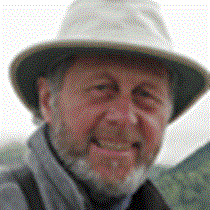Tracy Arm – Ford’s Terror Wilderness Area and Williams Cove
No one could ask for a more magnificent sight! Greeting us on deck was the majesty of glistening mountains, sculpted, carved and rounded by centuries of glacial grinding, and now shining in welcome sunlight. Tracy Arm, lying on the mainland south of Alaska’s capitol of Juneau, ranks as one of the world’s most spectacular fjords. It is a textbook example of how billions upon billions of snowflakes, under the astonishing pressure of additional snowflakes, are converted to ice. High ice fields overflow. Virtual rivers of ice ski ever so slowly downhill, slipping on a film of water. They pick up rocks and boulders and grit, plucked from the bedrock of the mountains. The “rasp” so created grinds into that very bedrock from which it was created. Fine glacial flour results and, relentlessly, mountains are reshaped. Ours was an exceptional first morning.
We watched and listened patiently as ancient ice crashed into the sea, to blend into the seawater from which it originated. We heard of the duties, hardships and excitement of young wilderness rangers. We slipped in ever-so-close to a chilling waterfall. And we teetered as our eyes and brain teamed up to fool us into seeing ancient plutons of granite, laden with xenoliths, folding and rising in a game of "continuity of retinal image".
Kayaking and forest-walking followed. Silent kayaks nosed into hidden waterfalls and snaked peacefully along a steep shoreline. Walkers listened to silence, and learned the form and function of forest parts. Long-walkers explored; why walk on trails when one can trudge off into dense rainforest where perhaps no man has ever walked? We bushwhacked! Edging gingerly around devils club, we slipped under or hurdled over fallen hemlocks that had lost their tenuous toehold in shallow soils. We pushed aside moist blueberry and false azalea shrubs and we found abundant evidence of bears. This was their home, especially now that pink salmon had returned from their two-year growth spurt in the vast Pacific Ocean. The fish were here to spawn and perpetuate their species. The black bears were here to take their fair share of the fish so they, too, would continue as a species. We watched as a big black bear casually caught a salmon. Up into the woods it went, probably to eat only the brain tissue, the flavour of the day. The rest would be left for the multitude of other mammals, birds and insects attracted to this riverside feast. Or perhaps this little package of protein and nutrients would simply decay into the soil, not to be wasted, but to be taken up by the trees, shrubs, mosses and mushroom that form this extremely complex forest community. Everything can benefit from returning salmon. We certainly did.
No one could ask for a more magnificent sight! Greeting us on deck was the majesty of glistening mountains, sculpted, carved and rounded by centuries of glacial grinding, and now shining in welcome sunlight. Tracy Arm, lying on the mainland south of Alaska’s capitol of Juneau, ranks as one of the world’s most spectacular fjords. It is a textbook example of how billions upon billions of snowflakes, under the astonishing pressure of additional snowflakes, are converted to ice. High ice fields overflow. Virtual rivers of ice ski ever so slowly downhill, slipping on a film of water. They pick up rocks and boulders and grit, plucked from the bedrock of the mountains. The “rasp” so created grinds into that very bedrock from which it was created. Fine glacial flour results and, relentlessly, mountains are reshaped. Ours was an exceptional first morning.
We watched and listened patiently as ancient ice crashed into the sea, to blend into the seawater from which it originated. We heard of the duties, hardships and excitement of young wilderness rangers. We slipped in ever-so-close to a chilling waterfall. And we teetered as our eyes and brain teamed up to fool us into seeing ancient plutons of granite, laden with xenoliths, folding and rising in a game of "continuity of retinal image".
Kayaking and forest-walking followed. Silent kayaks nosed into hidden waterfalls and snaked peacefully along a steep shoreline. Walkers listened to silence, and learned the form and function of forest parts. Long-walkers explored; why walk on trails when one can trudge off into dense rainforest where perhaps no man has ever walked? We bushwhacked! Edging gingerly around devils club, we slipped under or hurdled over fallen hemlocks that had lost their tenuous toehold in shallow soils. We pushed aside moist blueberry and false azalea shrubs and we found abundant evidence of bears. This was their home, especially now that pink salmon had returned from their two-year growth spurt in the vast Pacific Ocean. The fish were here to spawn and perpetuate their species. The black bears were here to take their fair share of the fish so they, too, would continue as a species. We watched as a big black bear casually caught a salmon. Up into the woods it went, probably to eat only the brain tissue, the flavour of the day. The rest would be left for the multitude of other mammals, birds and insects attracted to this riverside feast. Or perhaps this little package of protein and nutrients would simply decay into the soil, not to be wasted, but to be taken up by the trees, shrubs, mosses and mushroom that form this extremely complex forest community. Everything can benefit from returning salmon. We certainly did.




